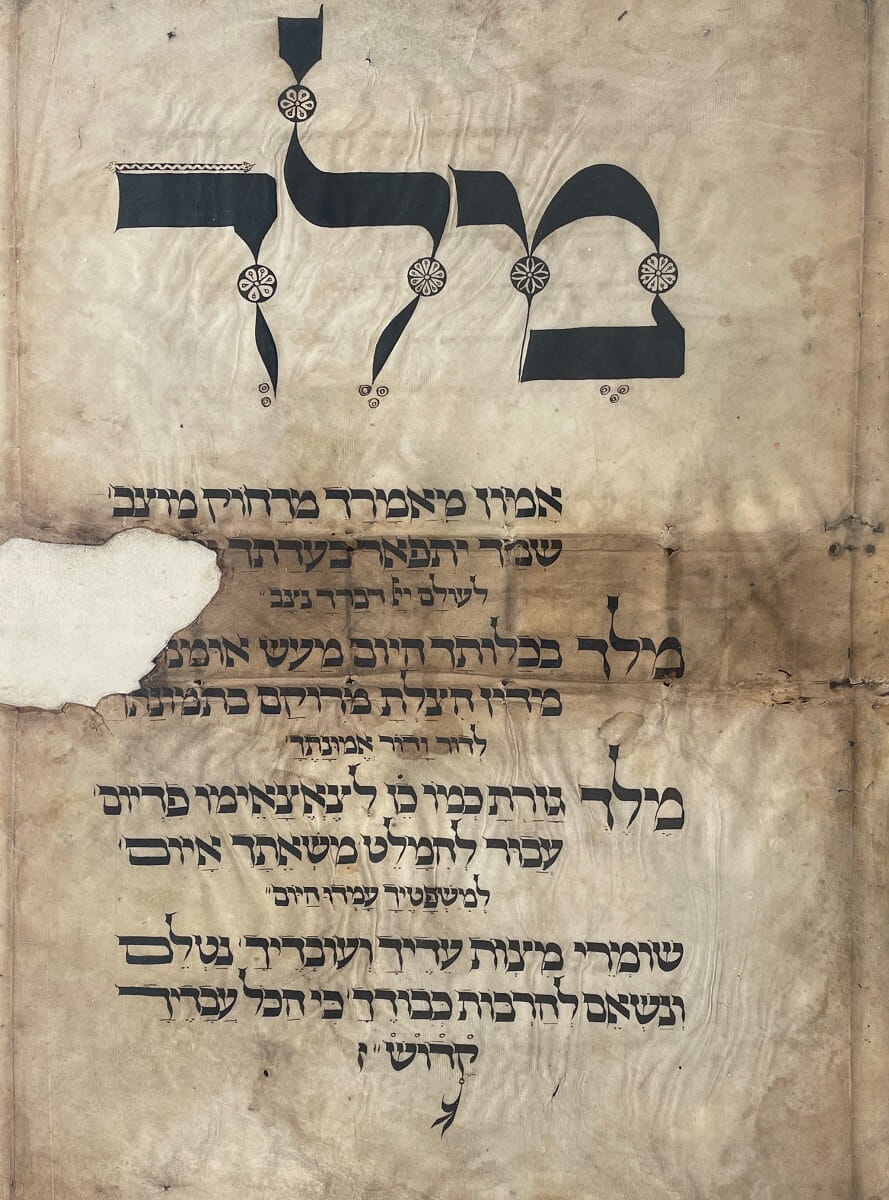May 2022 marks fifty years since the full reveal of one of the most unusual items in ICAEW’s collection of rare books – a Jewish manuscript with a devotional poem from the 15th century. The impressive penmanship of this manuscript had been hidden for almost 500 years.
Amongst the many rare books in the collection of the ICAEW the Summa de Arithmetica by Luca Pacioli is perhaps the most well known. The Kheil Collection of accountancy works, including two copies of Summa de Arithmetica, was purchased in Prague by the Institute’s librarian, Cosmo Gordon, in 1913.
The binding of one of our copies is a temporary cover made out of an old Hebrew parchment which appears to have been added by the Venetian bookseller. The volume would have been sold with the idea that the purchaser would add a more fitting cover but in this case it has remained in the temporary binding.
The parchment cover had long been the source of interest with lines of Hebrew text clearly visible on the worn cover, but more Hebrew text was revealed with some particularly fine craftmanship when the parchment cover was removed when this copy of the Summa de Arithmetica was rebound in May 1972.
The manuscript was translated by G.A. Lee before being placed in a new frame and hung on the wall of the ICAEW Library & Information Service where it remained for 30 years.
Lee dated the manuscript to the 15th century, surmising that it was probably of German or Central European origin. In Lee’s opinion the text would have been considered heretical and most likely to have been confiscated by the synagogue authorities but that 'as it contained in several places the standard Jewish abbreviation of the divine name it would have been considered impious to destroy it directly. It was therefore ritually singed with the flame of a lamp; the shape of the indentation at one side is consistent with such burning'.
Lee describes the manuscript as having both sides ‘occupied by Jewish liturgical texts in Hebrew or Aramaic, all apparently in the same hand and beautifully written in large, black characters, well-spaced and generous margins all round.’ The first word of the text on the manuscript is ‘Melekh’ (‘O King’) – hence the name given to the manuscript.
The text on side one is well known to Jews being a concluding section of the Amidah - the ‘standing prayer’, the central part of the Jewish liturgy. Also, on side one is the Kaddish, a hymn praising God written in Aramaic, recited during prayer services and often by mourners.

On the second side is the first section (of seven) of a piyyut, a devotional hymn sung during Jewish prayer services. Lee describes this as an ‘impressive example of Hebrew penmanship with its magnificent heading’

There is also a separate parchment fragment which was used as a patch to repair the top of the spine (the hole seen in the two images above). This contains Hebrew text identified as being a part of a piyyut for Yom Kippur (Day of Atonement). Lee was unable to date this piyyut or identify the author.
Lee concluded that the manuscript was not an official synagogue document but was more likely to be part of a set of extracts from the liturgy ‘perhaps made privately for the purposes of individual, family or group devotion. Beyond this it does not seem wise to speculate’
The manuscript spent 3 months in 2002 on loan to London’s Jewish Museum. The manuscript is not on display at present, but is safely stored in the most secure area of our rare books store, in carefully controlled conditions.
You can read more about the manuscript and its translation in the article 'The Melekh Manuscript: A Discovery in the English Institute Library' by G. A. Lee, published in The Accountant (pages 622-624) on November 16th 1972.
The manuscript is available to view at Chartered Accountants' Hall by prior arrangement with the library team.
Historical Accounting Literature
The ICAEW collection of historical accounting literature currently comprises over 4,000 volumes and includes works published from the 15th century to the early 20th century. The collection includes books and journals in a variety of languages.

